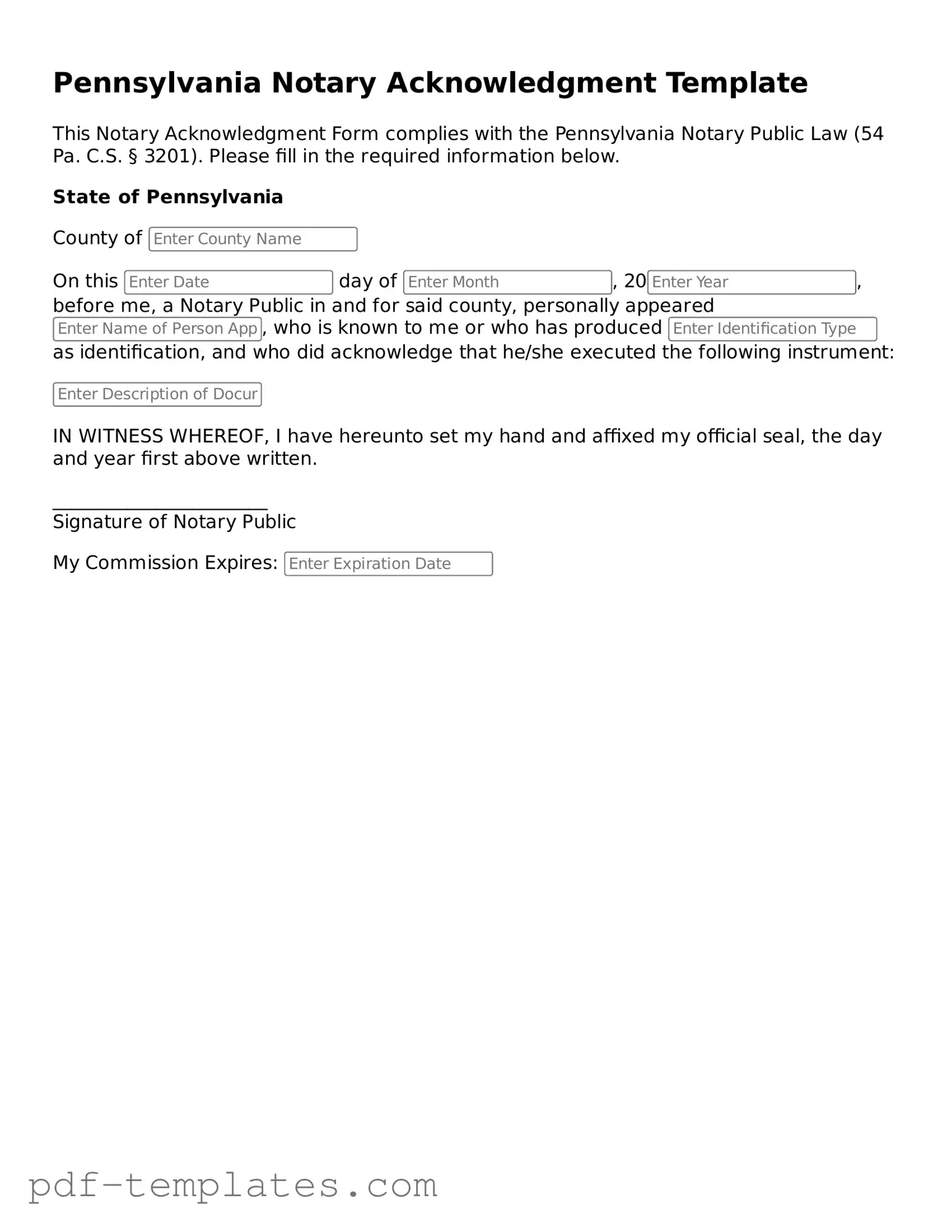Official Notary Acknowledgement Template for Pennsylvania State
The Pennsylvania Notary Acknowledgement form is a legal document that verifies the identity of individuals signing a document and confirms that they did so willingly. This form plays a crucial role in ensuring the authenticity of signatures and protecting against fraud. To ensure your documents are properly acknowledged, consider filling out the form by clicking the button below.
Customize Form Now
